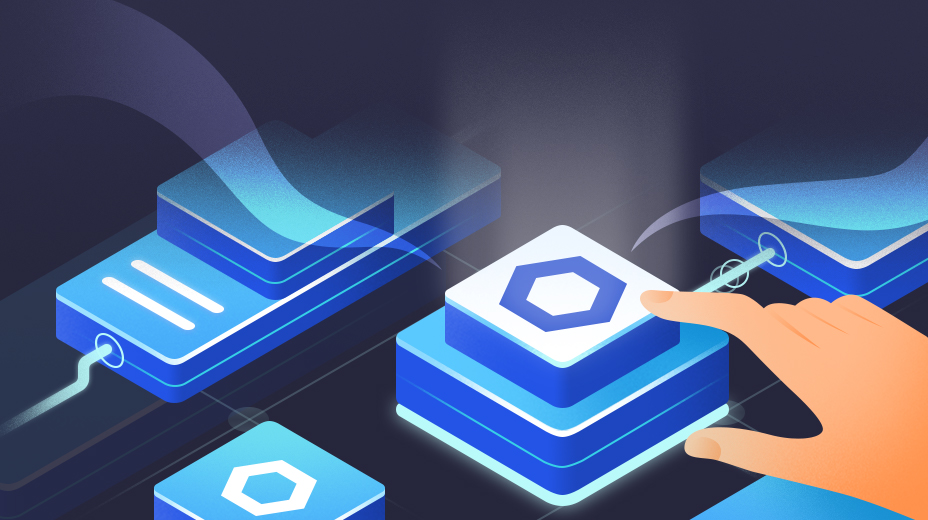OP Mainnetの技術的基盤
技術基礎モジュールは、OPメインネットに特に焦点を当てて、レイヤー2ブロックチェーンネットワークの理解を深めるように設計されています。 Ethereum JSON-RPC API の複雑さ、OP メインネットにおけるその役割、OP メインネットが他の EVM ベースのチェーンとどのように差別化されているかについて説明します。 このモジュールは、OP Mainnetの機能とブロックチェーンエコシステムにおけるその位置を支える技術的側面を把握するために重要です。
レイヤー2ブロックチェーンネットワークの理解
レイヤー2ブロックチェーンネットワークは、ブロックチェーン空間に不可欠なイノベーションであり、イーサリアムのような多くのレイヤー1ブロックチェーンに内在するスケーラビリティの問題に対処するために設計されています。 これらのネットワークは、既存のブロックチェーン(レイヤー1)上で動作し、トランザクションを独立して処理し、メインチェーンに記録します。 この構造により、OPメインネットのようなレイヤー2ソリューションは、基盤となるブロックチェーンのセキュリティと分散化を活用しながら、トランザクション速度を大幅に向上させ、コストを削減することができます。 レイヤー2ネットワークの主な目的は、分散化とセキュリティの基本原則を損なうことなく、ブロックチェーントランザクションの効率を高めることです。
レイヤー2ソリューションの重要な概念の1つは、オフチェーン計算の使用です。 トランザクションはメインチェーンから切り離され、独立した接続されたレイヤーで処理されるため、より速く、より効率的な処理が可能になります。 これは、分散型取引所やゲームプラットフォームなど、高いトランザクションスループットを必要とするアプリケーションにとって特に重要です。 レイヤー2ネットワークは、トランザクション処理の大部分をオフチェーンで処理することで、特に使用のピーク時に、レイヤー1ブロックチェーンに関連する混雑と高額な手数料を軽減します。
ロールアップは、OPメインネットを含む多くのレイヤー2ソリューションの顕著な機能です。 これらは、複数のトランザクションを 1 つのトランザクションにロールアップまたはバッチ処理し、メイン チェーンに転記することで機能します。 このプロセスにより、メインブロックチェーンに保存および処理する必要があるデータの量が削減されるため、効率が向上し、コストが削減されます。 ロールアップには、オプティミスティック ロールアップや zk-Rollup など、さまざまな形式があり、それぞれにセキュリティ、速度、複雑さの面で独自の利点とトレードオフがあります。
レイヤー 2 ネットワークのもう 1 つの重要な側面は、高度なセキュリティを維持できることです。 トランザクションはオフチェーンで処理されますが、これらのトランザクションのファイナリティとセキュリティはメインブロックチェーンに固定されています。 これは、レイヤー1ブロックチェーンの堅牢なセキュリティメカニズムが、レイヤー2のトランザクションの整合性を保護することを意味します。このセキュリティ モデルは、ユーザーの信頼と、より機密性の高いアプリケーションでのレイヤー 2 ソリューションの採用に不可欠です。
OPメインネットのようなレイヤー2ソリューションの開発は、ブロックチェーン技術の進化における重要な一歩を表しています。 レイヤー2ネットワークは、レイヤー1ブロックチェーンのスケーラビリティと効率性の課題に対処することで、ブロックチェーンアプリケーションの新たな可能性を開き、より幅広いユーザーやユースケースにとってより実用的でアクセスしやすいものにします。 ブロックチェーンエコシステムが成長と進化を続ける中、レイヤー2ソリューションはその開発においてますます重要な役割を果たす可能性があります。
Ethereum JSON-RPC APIとOPメインネットにおけるその役割
イーサリアムJSON-RPC APIは、イーサリアムエコシステムの重要なコンポーネントであり、外部アプリケーションがイーサリアムネットワークと対話するための標準化された方法を提供します。 このAPIにより、開発者はブロックチェーンの状態に関する情報を照会し、トランザクションを送信し、スマートコントラクトと対話することができます。 OPメインネットのコンテキストでは、Ethereum JSON-RPC APIは、Ethereumブロックチェーンとのシームレスな相互作用と互換性を確保する上で極めて重要な役割を果たします。
OPメインネットは、イーサリアム上に構築されたレイヤー2ソリューションであり、イーサリアムJSON-RPC APIを利用して、イーサリアムネットワークとの一貫性と相互運用性を維持します。 このAPIは、OPメインネットとイーサリアム間の通信を容易にし、データとトランザクションの効率的な転送を可能にします。 OPメインネットで構築する開発者にとっては、イーサリアムで使い慣れたのと同じツールや方法を使用できるため、開発プロセスが簡素化され、学習曲線が短縮されます。
Ethereum JSON-RPC APIは、OPメインネットでスマートコントラクトを実行するために不可欠です。 OPメインネットでスマートコントラクトが呼び出されると、APIは必要な情報をイーサリアムブロックチェーンに伝達し、イーサリアムネットワークのルールに従ってコントラクトが実行されるようにします。 この統合は、レイヤー1とレイヤー2の両方のプラットフォームでスマートコントラクトの整合性と一貫性を維持するために重要です。
トランザクションの送信と処理は、イーサリアムJSON-RPC APIによっても容易になります。 OPメインネットでトランザクションが開始されると、APIはこのトランザクションをフォーマットし、最終的な決済のためにイーサリアムネットワークに中継する役割を果たします。 このプロセスにより、OPメインネット上のトランザクションは、そのセキュリティと不変性を活用して、イーサリアムブロックチェーン上で確定されます。
また、このAPIは、OPメインネットで処理されたトランザクションのステータスと結果を検証するために重要な、イーサリアムブロックチェーンからのトランザクションレシートとブロック情報の取得を可能にします。 この機能は、ユーザーや開発者がブロックチェーン上のトランザクションを追跡および検証できるため、高度な透明性と監査可能性を必要とするアプリケーションにとって特に重要です。
Ethereum JSON-RPC API は、OP メインネットのブロックチェーン データをクエリするのに役立ちます。 これには、ユーザー残高の取得、スマートコントラクトのステータスの確認、過去のブロックチェーンデータへのアクセスが含まれます。 この機能は、ユーザーにリアルタイムの情報を表示する必要があるアプリケーションや、分析や意思決定のために履歴データに依存するアプリケーションにとって不可欠です。
OPメインネットにおけるEthereum JSON-RPC APIの役割は、Ethereumエコシステムにおけるレイヤー1とレイヤー2のソリューションの相互接続性を浮き彫りにしています。 このAPIは、OPメインネットがイーサリアムブロックチェーンと対話するための標準化された効率的な方法を提供することで、レイヤー2ソリューションがイーサリアムの強みを活用しながら、そのスケーラビリティの課題に対処できるようにします。 この統合は、ブロックチェーン空間におけるOPメインネットのようなレイヤー2テクノロジーのより広範な採用と成功の鍵となります。
ハイライト
- OP Mainnetのようなレイヤー2ブロックチェーンネットワークは、トランザクションをオフチェーンで処理し、メインチェーンに記録することで、イーサリアムなどのレイヤー1ブロックチェーンのスケーラビリティと効率を向上させるように設計されています。
- これらのネットワークは、オフチェーンの計算とロールアップを使用して、基盤となるブロックチェーンのセキュリティと分散化の原則を維持しながら、トランザクション速度を向上させ、コストを削減します。
- Ethereum JSON-RPC API は OP メインネットで重要であり、Ethereum ネットワークとのシームレスな相互作用を促進し、互換性と相互運用性を確保します。
- このAPIは、スマートコントラクトの実行、トランザクションの処理、OPメインネット上のデータの取得に不可欠であり、イーサリアムのセキュリティおよびインフラストラクチャと緊密にリンクしています。
- OP Mainnetが他のEVMベースのチェーンと異なるのは、主にレイヤー2ソリューションによるスケーラビリティへのアプローチであり、オフチェーンのトランザクション処理とイーサリアムでの最終決済に焦点を当てています。





